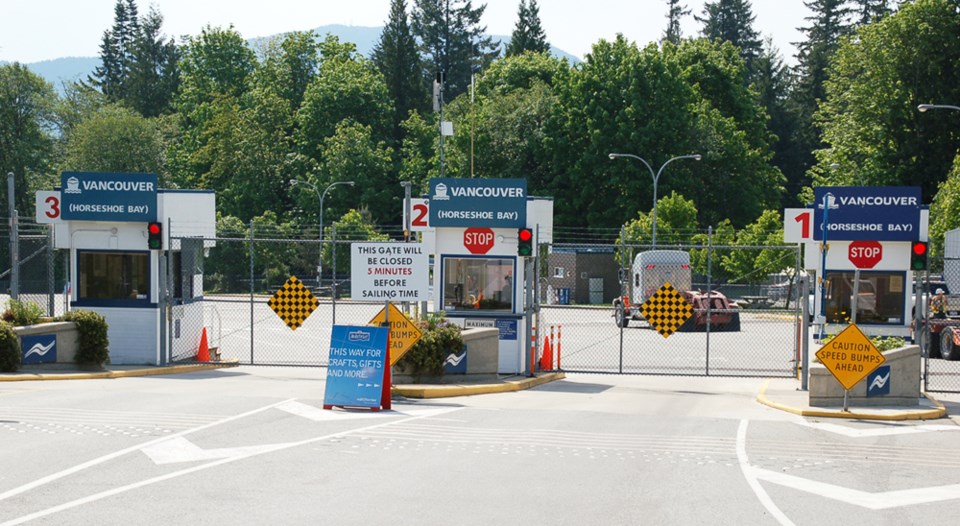BC Ferries says the largest capital plan in the company’s history will add more ships, improve terminals and upgrade the reservation and ticket sales system – and that when it’s all done in early 2030, “waits will largely end at major terminals,” including Langdale.
The bold prediction is part of BC Ferries’ Performance Term Five submission to the Ferries Commissioner.
The submission includes a review of how well the company has done in its current performance term and outlines plans for capital spending, fuel management and improving efficiency, in addition to a forecast of traffic demand through 2024.
The commissioner will use the submission, which is also part of the company’s contract with the province for the period from April 1, 2020 to March 31, 2024, to set fare caps.
BC Ferries is also predicting that after a record-setting year for vehicle travel and the highest passenger numbers in 20 years “led to more overloaded sailings and longer wait times at the terminals,” growth will continue, at a slowing rate, over 2019 and 2020. “At the same time, BC Ferries has limited ability to expand capacity, as all vessels are in service during peak periods.”
To help solve that, the company’s $3.9-billion capital plan will include replacing the C-Class vessels, including the Queen of Surrey, and adding what the company is calling an “incremental major vessel.”
“Adding an extra major vessel will also open the possibility of providing more frequent service on the route connecting Horseshoe Bay to Langdale beyond the summer months, which is not feasible with the existing fleet,” the submission says.
The submission also goes into some detail about the plans for the Langdale terminal, but doesn't mention costs beyond the $17 million in federal infrastructure money that was made available in 2017.
“The Langdale terminal is the only terminal to serve a major route without ticketing capabilities and without clear separation of foot passengers from vehicles,” it said. “With input from the communities and stakeholders, the Company envisages the construction of an overhead passenger walkway that will enable passengers to connect with the vessel from a new terminal building, civil works to restructure the flow of pick-up/drop-off traffic, and ticketing capabilities for passengers and vehicles. This multi-year project is planned to begin in fiscal 2019.”
An upgrade project at Horseshoe Bay is also expected to improve the movement of ferries and vehicles, helping on-time performance.
BC Ferries is also predicting its planned changes to the reservation system, website and e-commerce platforms will allow the company to get to a position of “assuring a customer they will be on a specific sailing before they begin their journey,” at least for major routes including Langdale-Horseshoe Bay. The goal is also to give travellers on the major routes “the ability to purchase travel in advance at discount rates on selected sailings.”
On the big question of fares, Ferries is telling the commissioner that fares are expected to remain at the current levels through March of 2020 and that the company should be able to maintain “affordable fares” as long as “revenues increase in alignment with the rate of inflation.”
The commissioner will make his final decision on fare caps for the new performance term by Sept. 30, 2019.



